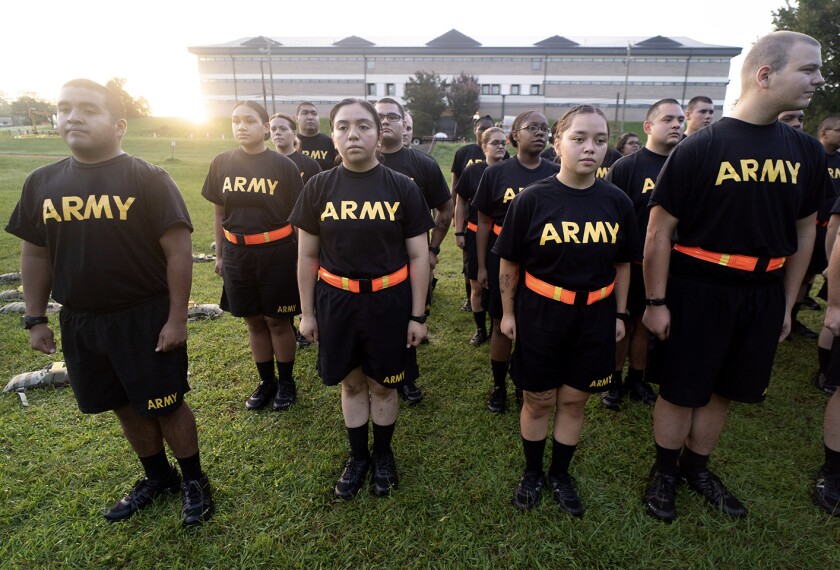When the global economy finally emerges from the pandemic crisis, the world of work is going to be a very different place.
In fact, across eight of the world’s largest economies, 107 million workers, or 1 in every 16, will need to find a different occupation by 2030, according to a study released Feb. 18 by the McKinsey Global Institute.
That’s 12 percent more than the organization had estimated before the pandemic hit. The report considered the jobs pictures in China, France, Germany, India, Japan, Spain, the United Kingdom, and the United States.
Those findings have huge implications for today’s K-12 students, many of whom will be entering the job market soon.
“The long-term impact is going to be quite disruptive,” said Susan Lund, a partner at McKinsey & Company and a co-author of the report during a webinar explaining the research. “Even after we get a vaccine and go back out about our business, we foresee that there will be more people who will need to move out of their current job and occupation and switch to different occupations to remain employed.”
And the disruption is going to be greatest for jobs that have the highest “physical proximity,” meaning workers and customers interact closely. That includes food service, retail, hospitality, and entertainment, industries where many young people used to get entry- level jobs out of high school or college.
In addition, the report predicts that low-wage workers will be hit the hardest. They are likely to make up 60 to 75 percent of the workers who will need to enter a different occupation, according to the report.
Professions that will be especially vulnerable to this change include onsite customer service, leisure, travel, indoor production and warehousing, food production, and computer-based office work (think the administrative people in a doctor’s office, hospital, or manufacturing plant.)
“COVID was a giant nudge that shifted consumers and businesses to operate in new ways,” Lund said.
Remote work is likely to explode going forward, with 20 to 25 percent of the workforce able to work from home at least three days a week, the report notes. That is still a minority of people, Lund said, but it’s about four times higher than before the pandemic.
That trend is going to have big implications for office space as well as lunch spots and stores in downtown areas. It may also mean that there will be movement out of high-cost cities and into suburbs, smaller cities, and towns.
And business travel could be down by as much as 20 percent permanently, as Zoom meetings replace in-person events, according to the report. That’s going to have big implications for the hospitality industry, even as leisure travel is expected to rebound.
Companies have been much more likely to rely on e-commerce, a continuing blow to industries like brick-and-mortar retail. In fact, e-commerce in the United States has grown more than 3 times faster during the pandemic than it did before the crisis.
What’s more, there’s been an acceleration in the use of automation and artificial intelligence, in order to deal with increased demand for goods that can be shipped online, and to help minimize the number of people on a factory floor. Once companies have made these shifts, it’s unlikely they will reverse course after the pandemic, Lund said.
Why schools need to pay close attention to these changes
So what does all this economic disruption mean for K-12 education? Bottom-line: Work-based learning experiences were already moving up the priority list. Now, they’ll be an even higher priority.
“It is critical for people to have more than just a basic high school or secondary education,” Lund said. “And that’s not to say that everybody needs a college degree or even a two-year associate’s degree. But we need to really expand the opportunities and options for different types of vocational training, apprenticeships, technical training, some sort of credential so that young people have a marketable skill and can get into a job that will lead to upward mobility.”
The problem is nothing new, she added, but the stakes of not acting are likely to become much higher.
“That’s a challenge that we’ve always had, but because people could get jobs in food service and retail, I think many countries didn’t put enough emphasis on actually making that a reality,” Lund said. “But now, coming out of COVID, this will not be optional. We really need to step up as countries to make this happen.”
The United States already has some great models for this type of learning, including Pathways in Technology Early College High School, or P-TECH, the report pointed out. Students can earn an associate’s degree in applied science along with a high school diploma. The curriculum, developed with significant input from industry, includes job-skills training so students are ready to enter the workforce upon graduation. The network partners with schools around the globe, including 161 in the United States.
Schools in the United States should work hard to expand such models, Lund said.






